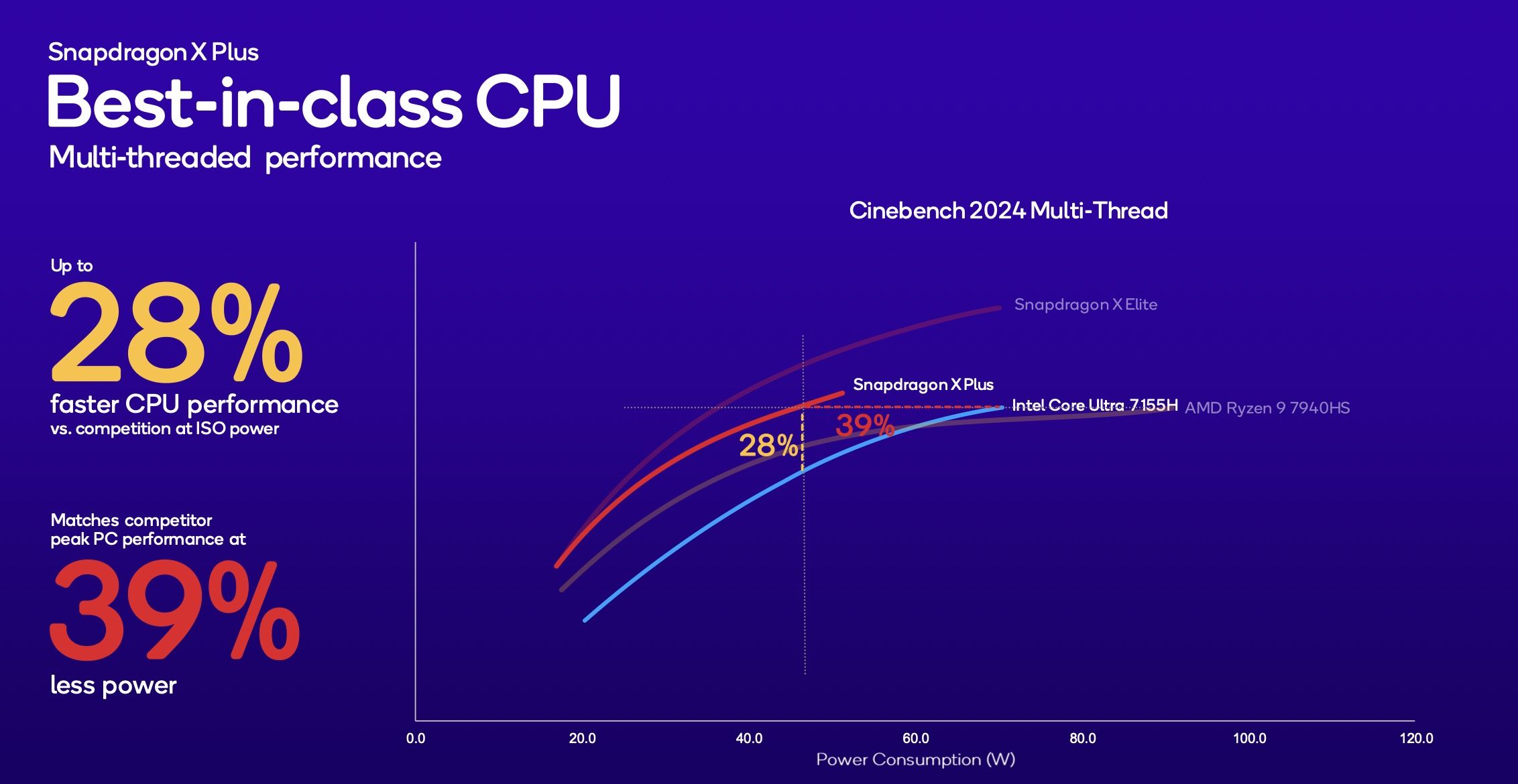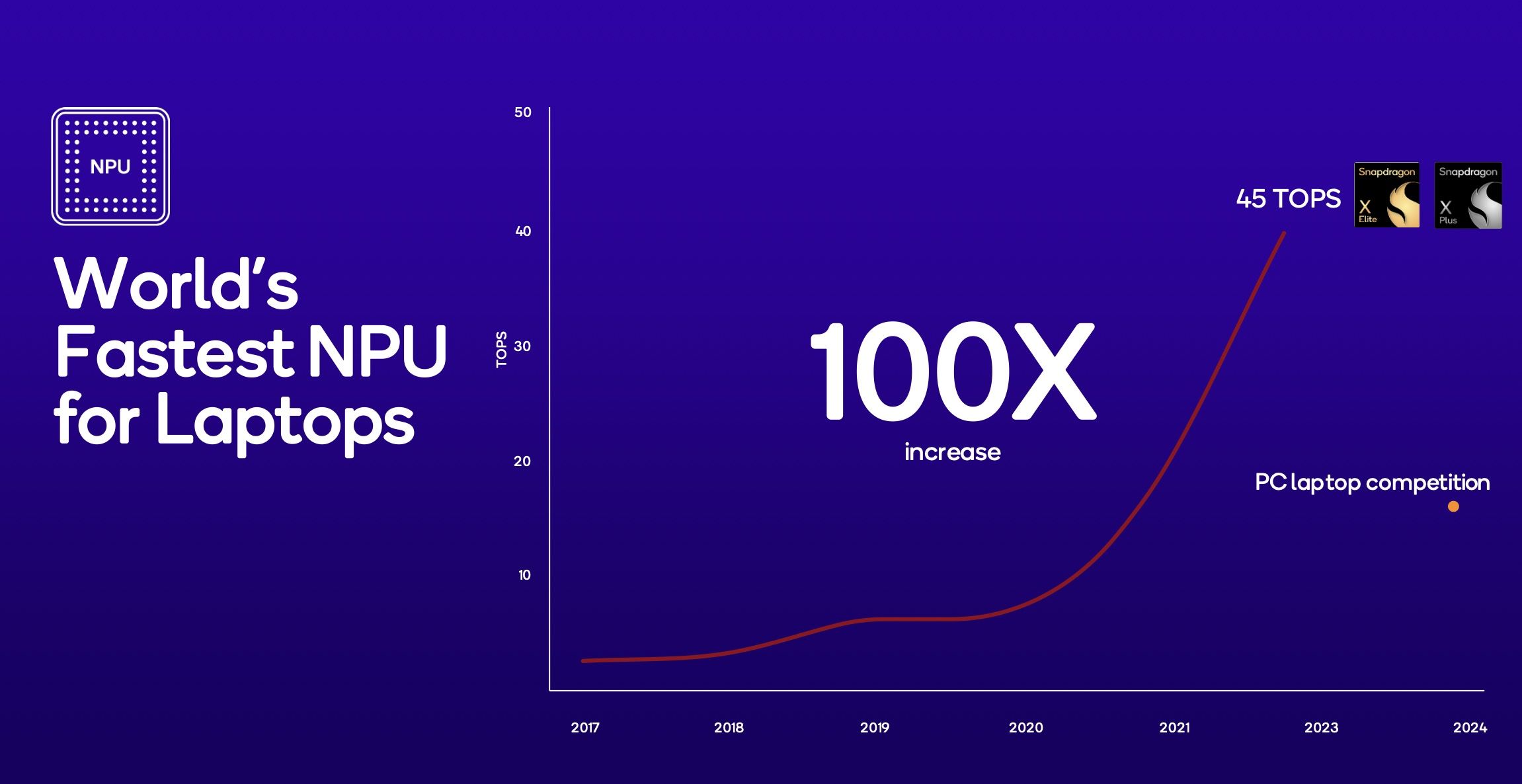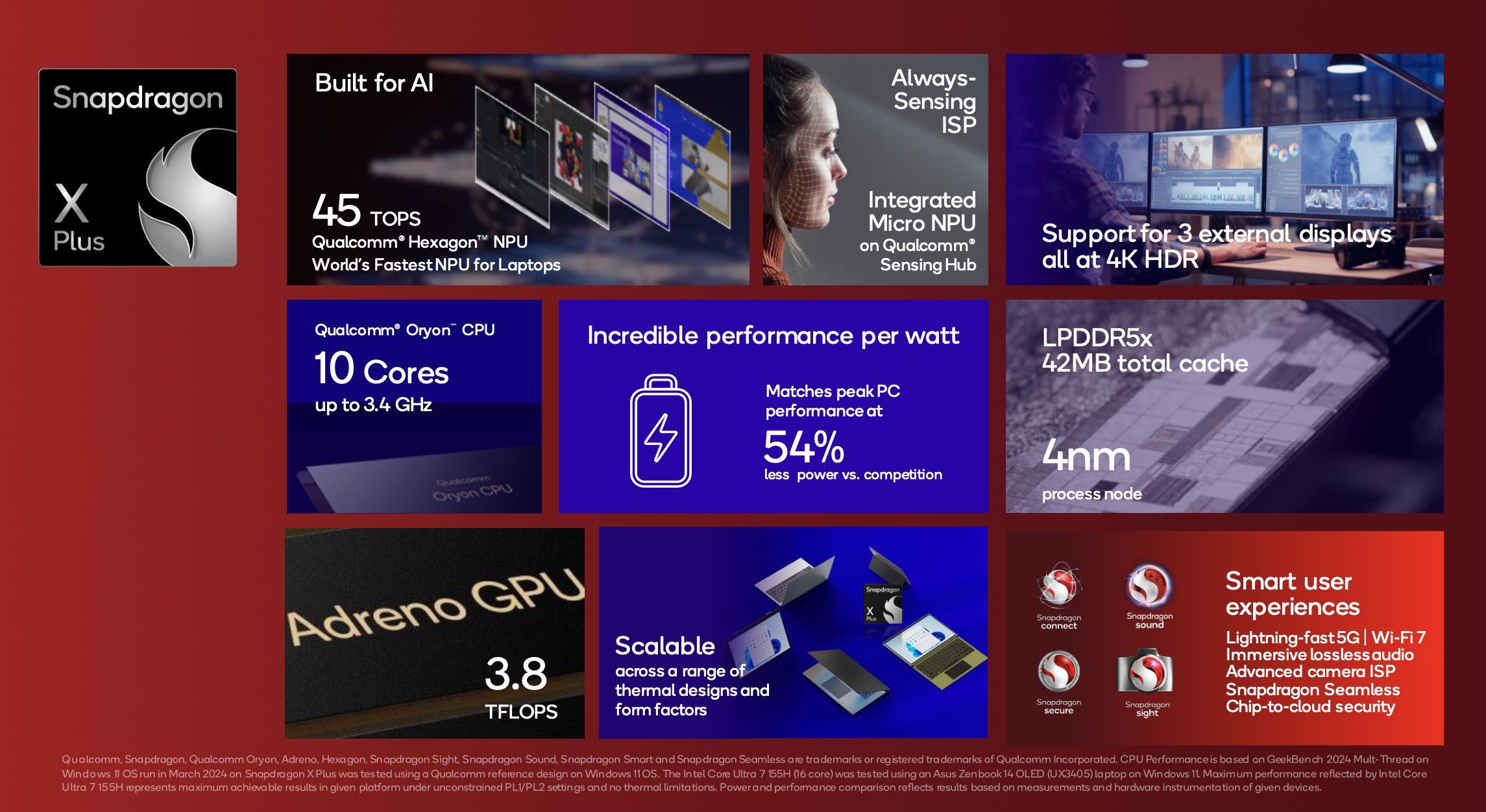No notebooks with Snapdragon Snapdragon X Plus. Qualcomm waited a while to announce this model, and we don’t know if it was the partners who made it change its mind by asking for a second processor, given the confusion that the single-processor policy could generate on the market.
We tried Snapdragon X Elite and it really seems like the revolution that Windows has been waiting for for a long time
Go to further information
Let’s remember that initially, when Qualcomm announced Snapdragon Totally different performances and therefore targets, but same processor, same name and same price range: convenient for Qualcomm, which has only one chip to sell at its price, less practical for those who find themselves having to manage a range with only one chip, also having to justify the differences in performance which at this point depend solely and exclusively on the choices of the various partners who need to integrate Snapdragon into their products.
The arrival of the Snapdragon X Plus helps everyone a little: two different processors, different performance, different price and very distinct targets. However, without giving up the performance that processors based on the Oryon core promise.
We have already talked a lot about Snapdragon
The CPU adopts the exact same configuration on three clusters with all identical cores: if X Elite has 12 cores at 3.8GHz (but two of these can reach 4.3 GHz) X Plus has 10 cores that reach 3.4 GHz and do not have a boost function. They are all high-performance cores, with 42 MB of total cache, and despite the loss of two cores according to Qualcomm the total speed in multithreading remains higher than that of the Apple M3 taken as a reference for power.
If you look instead at the competitors in the Windows x86 segment, Intel and AMD, Snapdragon .

With a less synthetic benchmark, therefore conditioned by elements such as the amount of cache present, performance drops slightly but however, they remain superior to Intel and AMD. Obviously Qualcomm’s word.

GPU performance drops slightly, going from 4.6 TFLOPS to 3.8 TFLOPS, here too some graphics cores have probably been lost and the clock has been reduced.

Even in this case, despite the drop, the performances that Qualcomm declares remain more than good.

The rest of the chip is the same: same 45 TOPS NPU, therefore adapted to process slim LLM models locally, same 5G X65 modem support, same Dual 18-bit ISP for camera management and same hardware video decoders, AV1 included.

Even if Qualcomm does not say it clearly, we are obviously faced with the classic “binning” where processors with some non-functioning cores are reused: Snapdragon X Plus loses two CPU cores and some GPU cores, but the performance remains excellent and will allow you to have notebooks at a decidedly lower price point.
The first product to adopt this version should be the new Surface that Microsoft will present in May during the Build .












